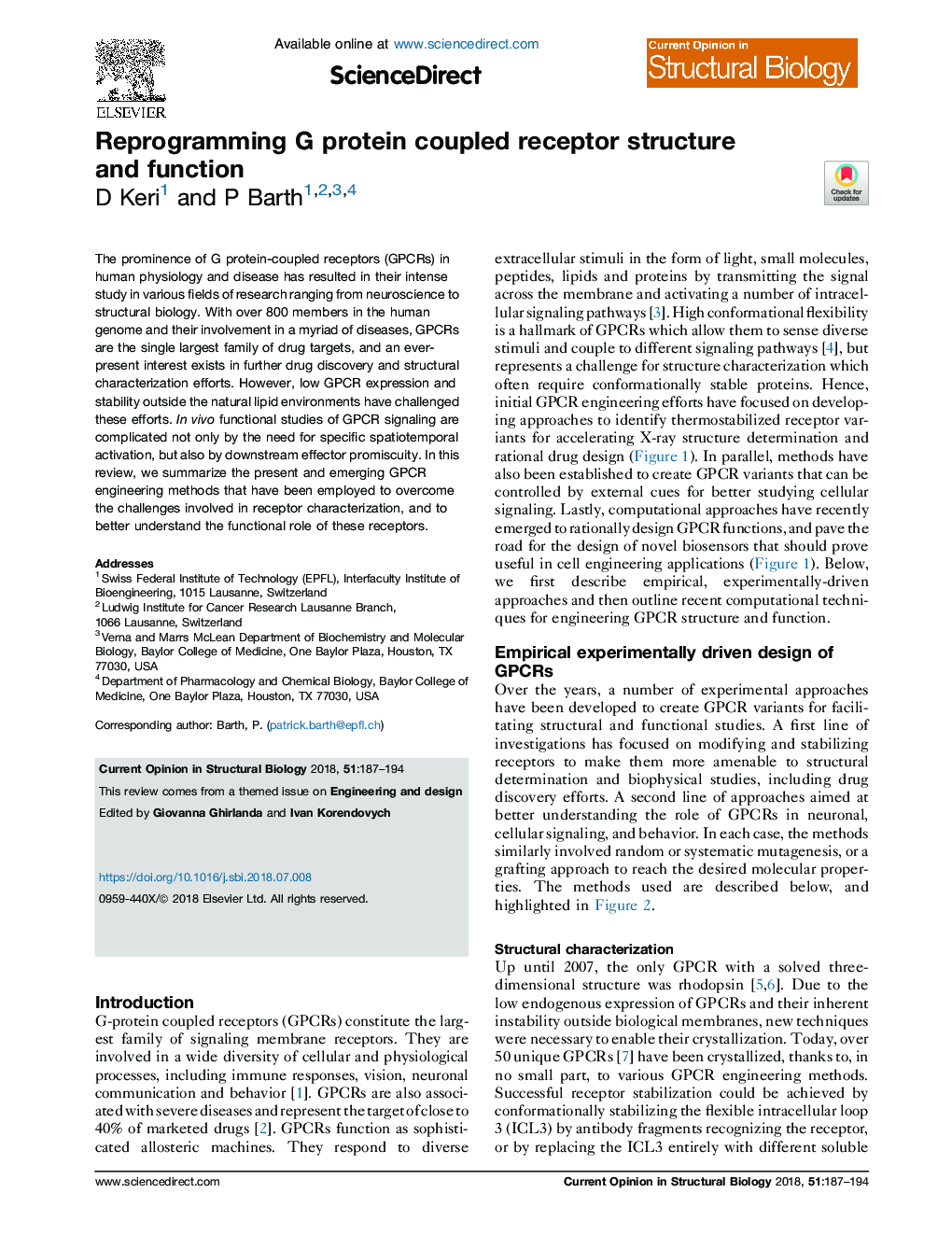| Article ID | Journal | Published Year | Pages | File Type |
|---|---|---|---|---|
| 8319361 | Current Opinion in Structural Biology | 2018 | 8 Pages |
Abstract
The prominence of G protein-coupled receptors (GPCRs) in human physiology and disease has resulted in their intense study in various fields of research ranging from neuroscience to structural biology. With over 800 members in the human genome and their involvement in a myriad of diseases, GPCRs are the single largest family of drug targets, and an ever-present interest exists in further drug discovery and structural characterization efforts. However, low GPCR expression and stability outside the natural lipid environments have challenged these efforts. In vivo functional studies of GPCR signaling are complicated not only by the need for specific spatiotemporal activation, but also by downstream effector promiscuity. In this review, we summarize the present and emerging GPCR engineering methods that have been employed to overcome the challenges involved in receptor characterization, and to better understand the functional role of these receptors.
Related Topics
Life Sciences
Biochemistry, Genetics and Molecular Biology
Biochemistry
Authors
D Keri, P. Barth,
